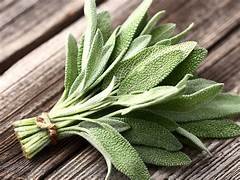Spring’s Healing Herbs: 5 Medicinal Weeds You Can Ethically Forage
By Mark Vanderende | The Foraging Bee
As winter fades, spring bursts forth with wild green medicine hiding in plain sight. Often dismissed as “weeds,” these powerful plants are some of the most accessible—and underrated—remedies nature offers. With mindful, ethical foraging, we can support our health while respecting the ecosystem.
Here are five common medicinal weeds that thrive in spring, how to identify, harvest, and use them safely and sustainably.
1. Dandelion (Taraxacum officinale)
Medicinal Benefits:
Supports liver detoxification and digestion
Diuretic and rich in vitamins A, C, and K
Roots nourish the skin and digestive system
How to Harvest:
Pick young leaves early in spring for salads and tea
Flowers can be infused in oil or used to make dandelion wine
Dig roots in early spring or fall—clean and dry well for tea or tincture
Where to Look:
Lawns, fields, meadows, and roadsides (avoid sprayed areas)
Look for toothed, basal leaves and bright yellow flowers
2. Chickweed (Stellaria media)
Medicinal Benefits:
Soothes skin rashes and irritation
Mild anti-inflammatory and diuretic
Nutrient-rich: high in vitamin C, iron, and magnesium
How to Harvest:
Snip tender tops before flowering
Eat fresh in salads or blend into smoothies
Infuse in oil for a skin-healing salve
Where to Look:
Moist, shady gardens, field edges, and under trees
Delicate stems with small white star-like flowers
3. Purple Deadnettle (Lamium purpureum)
Medicinal Benefits:
Anti-inflammatory and antimicrobial
Can ease seasonal allergies
Edible and rich in iron and antioxidants
How to Harvest:
Harvest tops during bloom
Use fresh in tea, tinctures, or even as a pesto base
Dry or freeze for future use
Where to Look:
Garden beds, compost piles, disturbed soils
Purple-tipped leaves with fuzzy texture and hooded pink-purple flowers
4. Cleavers (Galium aparine)
Medicinal Benefits:
Supports the lymphatic system and detox pathways
Mild diuretic and internal cleanser
Helpful for swollen glands and inflammation
How to Harvest:
Harvest before flowering, while stems are tender
Best used fresh in overnight cold infusions or juiced
Sticky stems can be bundled and hung to dry
Where to Look:
Along hedgerows, damp woods, and garden edges
Sticky, vine-like plant with whorled leaves and tiny white blooms
5. Plantain (Plantago major & P. lanceolata)
Medicinal Benefits:
Anti-inflammatory, antimicrobial, and wound-healing
Draws out toxins from stings, bites, and splinters
Soothes sore throats and coughs
How to Harvest:
Pick young, clean leaves in spring
Mash fresh into a poultice or dry for tea
Infuse in oil for salves or healing balms
Where to Look:
Sidewalk cracks, compacted soil, and lawns
Broadleaf and narrowleaf varieties—both are medicinal
Ethical Foraging Guidelines
Harvest mindfully. Only take 10–20% of any patch
Avoid polluted areas. Never forage near roadsides or treated lawns
Always ID correctly. Use a field guide or app to double-check
Give back. Say thanks, scatter seeds, and tread lightly
Use what you take. Respect the plant by putting it to use
Let Nature Nourish You
Spring is a time of renewal, and these wild “weeds” offer healing, vitality, and deep connection to the land. As always, forage responsibly—and let curiosity guide your steps.
Let’s 🐝 curious and wild-hearted together.
Explore more with me at www.theforagingbee.com



